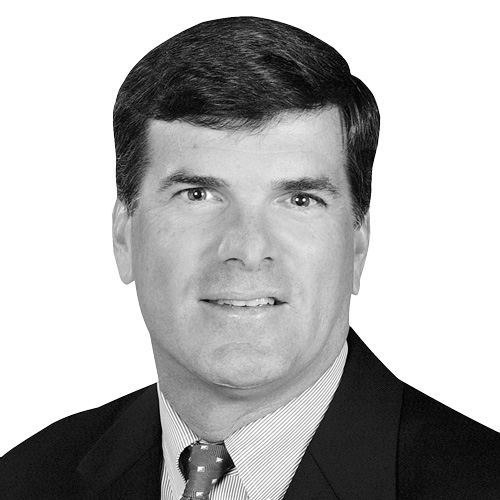Influenced by her parents’ activism and the economic and cultural disparities between East San Jose and her hometown of West San Jose—where she and her sister were among the only Latinas at their primary school—Carmela Castellano-Garcia knew at a young age that she wanted to devote her life to social justice. She would find her way there through the untapped potential she saw in the community health center.
“First and foremost, health centers continue to educate our partners that millions of people remain uninsured and underinsured, and we can’t leave these individuals behind,” says Castellano-Garcia, president and CEO of the California Primary Care Association (CPCA). “Second, we need to build up our workforce pipeline so we have the clinical and operations staff necessary to ensure everyone has access to high-quality care.”
“First and foremost, health centers continue to educate our partners that millions of people remain uninsured and underinsured, and we can’t leave these individuals behind.”
The only Mexican American woman in her graduating class at Yale Law School, Castellano-Garcia joined the San Francisco civil-rights firm Public Advocates in 1992, where she spent more than half a decade working on class-action litigation suits on behalf of minority clients. Around the time the Clinton administration released its healthcare-reform package in 1993, she approached her firm’s leadership with an idea to spearhead a new coalition that would bring a stronger Latino voice to a statewide quest for healthcare reform in California. That idea would become the Latino Coalition for a Healthy California (LCHC).
One of Castellano-Garcia’s key goals for the LCHC was to expand access to community clinics and health centers (CCHCs) for the state’s uninsured, a disproportionate 54.5 percent of who are Latino.
Another was to introduce cultural and linguistic competencies—translation services for care visits, medications in Spanish, and culturally appropriate dietary protocols—into the state’s managed-care program to give patients greater control of their medical destinies.
“The influx of newly insured patients accessing care has placed an increasing burden on providers and amplified the fact that we have a severe primary-care provider shortage in California.”
LCHC’s victories and Castellano-Garcia’s close ties to a brain trust of healthcare executives across the state helped propel her in 1997 to the helm of the CPCA, an advocacy and health-center training association representing more than 1,100 nonprofit CCHCs and regional clinic associations in California.
Over the last twenty years, the CPCA has led the charge for improved community healthcare services—particularly for low-income, uninsured, and underserved Californians, who might otherwise not have access to care.
“Before CPCA, our safety-net providers were a ragtag group of clinics not united under a single banner. Their power in state and federal legislation was severely compromised,” Castellano-Garcia says. “We’ve been successful in gaining political clout in Sacramento, bringing a voice to the millions being served in these clinics.”
Since the inception of the CPCA, the number of patients served by health centers has jumped from 2.4 to 5.6 million; the number of community health centers from 472 to 1,100; and statewide healthcare revenue from $795 million to $3.3 billion. Castellano-Garcia adds that technical training provided to clinics to improve care quality and ensure compliance with licensure guidelines has helped galvanize this growth.
“In many ways, California is no different than the rest of the country,” Castellano-Garcia says. “We have millions of uninsured individuals in need of primary care. Where we’re exceptional, regarding healthcare reform, is we have gone from the community health center being the only practice willing to serve, to being a safety net, to being the provider of choice. Fifty-seven percent of the state’s new enrollees are signing up at community health centers, and 2,000 counselors are helping these patients choose to enroll.”
An early victory for the CPCA, the Steven M. Thompson Physician Corps Loan Repayment Program, launched in 2002, offered up to $105,000 in assistance to recently licensed allopathic or osteopathic physicians to practice in healthcare-shortage areas. That same year, the CPCA rallied support from health-center constituencies for passage of the Medi-Cal Prospective Payment System (PPS)—or what Castellano-Garcia calls “the most important backbone for the financial viability of California’s community health centers.”
More recently, the CPCA pushed for the passage of a three-year pilot program under Senate Bill 147, sponsored by Senator Ed Hernandez, to test a new payment structure for federally qualified health centers. With eighty health centers in twelve counties signed on, the payment-reform program is the largest of its kind in the country. Under the law, participating health centers alter the current PPS reimbursement rate, based on face-to-face office visits, to a per-member, per-month capitation payment, which is based on enrollment and whether or not a patient seeks care.
One of patients’ most appreciated benefits is the clinics’ ability to provide care via phone consultation, e-mail, or in peer-group settings. Patients can also choose from a diverse array of qualified professionals, such as clinical pharmacists and dieticians, to delivery services. In effect, a provider has greater service flexibility, but assumes more risk since they are functioning somewhat like an insurance provider who captures value across a range of services.
But out of all the healthcare-reform legislation that CPCA has helped advance, nothing looms larger for Castellano-Garcia than the Health for All Kids Act, a CPCA-supported bill signed into law by Governor Jerry Brown in October, which provides coverage for all of California’s undocumented immigrant children—some 170,000 of them.
“Running a community health center is not an easy business,” Castellano-Garcia says. “Providing healthcare, regardless of ability to pay, for close to two million uninsured patients paying on a sliding fee scale—that’s a tough business for clinics.” Tough business, though, has proven to be her insatiable calling. Whether waged in community meetings, press conferences, or rallies on the steps of California’s capital, the fight to provide political agency to Latinos and other underrepresented minority groups seeking affordable care, for Castellano-Garcia, is a lifelong passion project.

